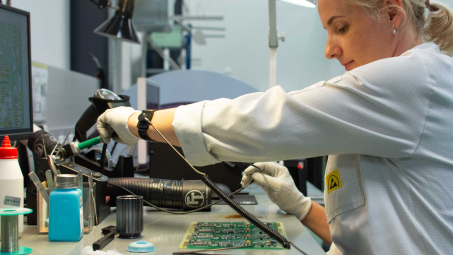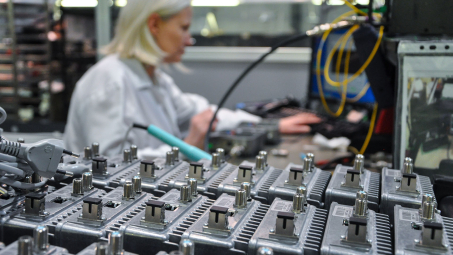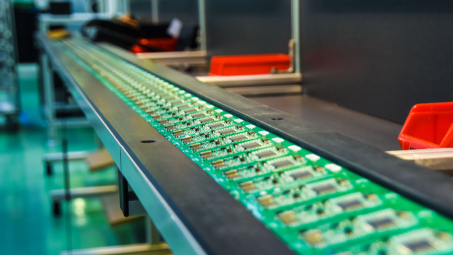Flexible Supply Chain Process: A Solution to Market Challenges
Efficient supply chain processes are becoming increasingly important in today’s global economy, and purchasing departments are critical in ensuring that companies operate smoothly.
With globalisation comes increased competition, which means that manufacturers need to be more efficient and cost-effective in their operations. The purchasing department is at the forefront of this process, as it is responsible for cooperating with suppliers worldwide.
One of the crucial characteristics of adapting to changing market conditions is flexibility. A flexible supply chain can adjust to fluctuations in demand and supply and unexpected market disruptions. However, achieving such flexibility is not always easy, and it often depends on many factors.
Explore the flexible supply chain process concept and its role in overcoming market challenges by reading our insightful article!
Table of Contents
- Unlocking the Benefits of a Well-Organised Supply Chain Management Process
- The Importance of Collaboration and Open Communication in Modern Supply Chains
- Recognising the Vital Role of People in Effective Supply Chain Management
- Adapting Supply Chain Management Strategy: Lessons Learned from Recent Crises
- Mitigating the Impact of Supply Chain Disruptions
- Dealing with Market Challenges: The Case of VECTOR BLUE HUB
- Trends in the Components Market in 2023: What will the Future Bring?
The Heart of Efficiency: Unlocking the Benefits of a Well-Organised Supply Chain Management Process
Managing the supply chain is an essential aspect of any business that produces and distributes goods. It involves coordinating and managing all the activities involved in sourcing, procuring, and delivering goods and services to customers. The supply chain management (SCM) process can be complex and challenging, especially when introducing a new product into the market.
The Importance of Collaboration and Open Communication in Modern Supply Chains
At VECTOR BLUE HUB, we firmly believe that collaboration is the cornerstone of our success. Our Supply Chain Department works closely with other crucial divisions, such as Technology, Research and Development, Quality Assurance, Warehouse, and Production, to foster seamless integration and streamline our operations.
Furthermore, our partnerships with suppliers are based on open communication and mutual trust, enabling us to generate innovative solutions that exceed client expectations regarding quality, affordability, and prompt delivery.
Recognising the Vital Role of People in Effective Supply Chain Management
Our supply chain team comprises ten highly skilled individuals with expertise in various categories, such as raw materials, packaging, and logistics. The team is responsible for:
- negotiating with suppliers to ensure the best possible prices,
- managing relationships with vendors,
- ensuring that goods are delivered on time and in the right quantities,
- providing the correct data to the customer relationship management (CRM) system.
In addition, they also play a vital role in managing inventory levels, ensuring that the company has enough stock to meet production demands without overstocking or wasting resources.
Their role is crucial in a world full of challenges and an uncertain future. See how they have been coping in the era of huge market turbulences.
Adapting Supply Chain Management Strategy: Lessons Learned from Recent Crises
The last few years, dominated by the Covid-19 pandemic and the war in Ukraine, have posed significant challenges for supply chain management across various industries. In the electronics market, these challenges have manifested in the form of global shortages of essential components and raw materials.
Navigating Raw Material Shortages – Flexible Model
The pandemic has disrupted production and logistics operations, causing delays and forcing companies to adapt to new ways of working.
Additionally, the ongoing conflict in Ukraine has disrupted supply chains and caused uncertainty in the market.
"As a result, many electronics manufacturers have had to change their strategies and look for new sources of supply. Despite these challenges, companies with effective supply chain management practices have been able to mitigate the impact of these crises and emerge stronger", said Anna Stenka-Kosińska, Buyer at VECTOR BLUE HUB.
Mitigating the Impact of Supply Chain Disruptions
While the second half of 2022 saw some stabilisation, delivery times have remained more prolonged than usual. As the electronic components market continues to grapple with the impacts of the crises, businesses need to stay abreast of these developments and plan accordingly. Finding alternative suppliers, adjusting production schedules, and managing inventory levels can all help mitigate the effects of ongoing supply chain disruptions.
Dealing with Market Challenges: The Case of VECTOR BLUE HUB
Five Milestones in Overcoming Difficulties Successfully:
- Reacting Quickly to a Changing Market
- Choosing and Implementing Tools Efficiently
- Modifying Processes to Meet Production Goals
- Specialist Group for Efficient Modifications
- Combining Rapid Response and Preventive Measures
Reacting Quickly to a Changing Market
In a market where component shortages and rapidly changing availability were the norm, timely responses were critical for success. Failure to react promptly to market changes could result in lost opportunities and lower profits.
Choosing and Implementing Tools Efficiently
To achieve our goals, we had to utilise and even modify the technological tools that were available to us. We discovered that relying on widely available solutions, such as the Cut tapes offered by distributors, posed significant risks, including quality deterioration, unplanned downtime, and production flow issues. Incomplete SMD spools also presented a high risk of component loss.
Modifying Processes to Meet Production Goals
Therefore, we needed to be mindful of the tools we chose to use and how we implemented them. We made use of splicing tools dedicated to SMD tape, which helped us maintain production continuity and minimise the loss of CHIP-type components. When dealing with semiconductor component substitutions, we had to modify our printing process. Not all components were interchangeable, so we had to take additional measures, such as changing the shape and amount of solder paste, to ensure that we were still meeting our production goals.
Specialist Group for Efficient Modifications
At VECTOR BLUE HUB, we considered the component’s individual properties and the operating environment when making modifications, drawing on our expertise and extensive experience to implement changes efficiently. Our goal was to meet delivery dates and maintain the highest product quality, so we formed a specialist group comprising Process Engineers, Research&Development, Quality Assurance, and Supply Chain.
Combining Rapid Response and Preventive Measures
Together, after all the turbulence in the market, we demonstrated high flexibility and creativity in searching for the best solutions. We combined a rapid response to shortages or limited quantities of components with preventive measures, including ordering in advance or reacting to cuttings, incomplete spools, or bulk packaging and redesigning equipment with a unique design.
With specialists from various areas present, we could analyse risks and propose solutions well in advance, providing cross-product analysis and a broader view of projected market problems.
Trends in the Components Market in 2023: What will the Future Bring?
As we look ahead to 2023, trends in pricing and component availability are becoming more apparent. While prices for electronic components are still expected to rise, the rate of increase is projected to be lower than in 2022.
Unfortunately, there are no signs of a downward trend in prices. With global inflationary pressures, rising wages, and increased costs of raw materials such as copper (+1.7%) and nickel (+4.6%), it is unlikely that we will see any relief soon. Furthermore, the ongoing conflict in Ukraine has caused further significant disruptions to global supply chains, leading to even more price increases.
The Importance of Monitoring Market Conditions
While overall component availability may improve in the coming months, the market remains dynamic and unpredictable. It is essential to monitor the situation closely and maintain regular communication with suppliers and customers to stay informed of any changes. Currently, lead times remain stable but at high levels.
Economic Factors Affecting the Components Market
The global inflationary pressures and rising interest rates are affecting economic growth and consumer spending, leading to a decrease in demand for the electronic components used in consumer goods. As a result, customers are likely to delay orders, leading to indirectly greater availability of components through distribution.
Manufacturers Respond to Decrease in Demand
Some manufacturers have responded to this situation by making significant changes, announcing that all backlog orders placed with them before the end of 2023 are non-cancellable and non-returnable. However, high-end chips are still on allocation, indicating that restrictions on PSP programs may be eased soon.
Signs of Improvement in Availability on Unauthorised Markets
We are seeing signs of lower prices and greater availability of many problematic components on unauthorised broker markets. These prices are significantly lower than those seen just a few months ago and are now more reasonable.
VECTOR BLUE HUB’s Success in a Turbulent Market
VECTOR BLUE HUB has proven to be resilient in a challenging market environment. By embracing flexibility and adaptability, the company has succeeded in facing electronic market problems.
- Dedicated Team for Critical Situations
One of the keys to its success was creating a dedicated team to handle critical situations, ensuring that the company was well-prepared to respond to unexpected challenges. - Streamlined Process of Selecting Alternatives
In addition, VECTOR BLUE HUB has streamlined its process of selecting alternatives, relying on a team of technologists and designers to identify and implement solutions quickly. - Mitigating the Impact of Rising Prices
Our company has also adopted a range of strategies to mitigate the impact of rising prices on its production costs, such as negotiating better prices with suppliers, redesigning products, and even changing suppliers if necessary. - Prioritising Essential Components of Modern Manufacturing Companies
Efficient supply chain management, effective communication, collaboration, and flexibility are all essential components of modern manufacturing companies. The company has thrived despite the market’s challenges by prioritising these values.















